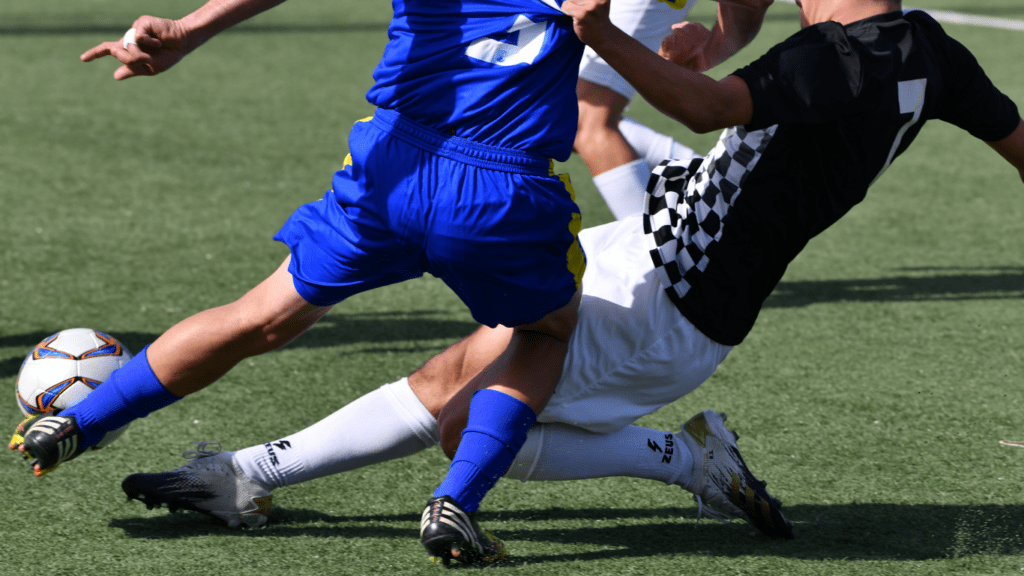Understanding Football Betting Odds
Betting odds represent the likelihood of a specific outcome in a football match. Staying informed about these odds helps bettors make educated decisions.
How Betting Odds Work
Betting odds indicate the potential payout for a successful bet. They come in three formats: fractional, decimal, and moneyline.
- Fractional Odds: Common in the UK and Ireland. Represented as fractions (e.g., 5/1). A £10 bet at 5/1 returns £50 profit plus the initial stake.
- Decimal Odds: Predominant in Europe, Canada, and Australia. Displayed as decimals (e.g., 6.00). A $10 bet at 6.00 yields $60 total.
- Moneyline Odds: Popular in the US. Shown with positive or negative numbers (e.g., +500, -200). A $100 bet at +500 returns $500 profit, whereas a $200 bet at -200 returns $100 profit.
Bookmakers calculate odds based on multiple factors, including team form, head-to-head records, and even statistical models. They adjust odds to balance the amount bet on each side of a wager, aiming to mitigate risk.
The Influence of Player Information on Odds
Player information dramatically influences betting odds. Key player injuries, suspensions, or returns can all shift odds significantly.
- Injuries: A star player’s injury often leads to increased odds for their team, suggesting a higher perceived risk.
- Suspensions: Similar to injuries, player suspensions cause odds adjustments. A suspended key defender may lead to higher goal line odds.
- Returns: Conversely, the return of a top player typically results in shorter odds, indicating greater confidence in the team’s performance.
Bookmakers use real-time data to update odds promptly after receiving player news. Savvy bettors track these updates to capitalize on early odds before the market adjusts fully.
The Impact of Player Injuries on Betting Odds

Player injuries significantly impact betting odds in football. Bookmakers react swiftly to injuries, altering odds to reflect the new probabilities of outcomes.
Immediate Effects on Line Movements
Bookmakers adjust odds almost instantly when key players get injured. If a star quarterback injures their knee, odds for their team will lengthen immediately.
This happens because the probability of the team winning decreases. Bettors who react quickly to injury news can take advantage of these early line movements.
For example, if a top scorer in soccer injures their ankle, betting odds on their team winning the match will increase right after the news breaks.
Long-Term Changes in Betting Patterns
The impact of player injuries extends beyond immediate odds adjustments. Injuries also lead to shifts in long-term betting patterns.
Bettors may adjust their strategies by avoiding or laying bets on teams with frequent injuries. For example, if a football team suffers multiple injuries throughout the season, bettors will likely favor their opponents more often.
Additionally, markets for season-long bets, like total wins or futures, can see significant changes. If a star running back faces a season-ending injury, odds for the team winning their division may increase, reflecting decreased expectations.
Case Studies of Significant Injuries
Examining key injuries in recent football seasons provides insights into how player absences impact betting odds. These case studies shed light on the relationship between a player’s health and betting markets.
Major Injuries in Recent Football Seasons
1. Kevin De Bruyne, 2018-2019 Season: Kevin De Bruyne suffered two significant injuries that season. His absence led to increased odds for Manchester City’s matches, as he played a crucial role in their midfield.
Upon his return, the odds adjusted to reflect his contributive presence.
2. Neymar, 2019-2020 Season: Neymar’s injury before the UEFA Champions League knockout stage substantially altered PSG’s odds.
Bookmakers adjusted the odds to reflect a lower probability of PSG progressing without one of their star forwards.
4. Virgil van Dijk, 2020-2021 Season: Van Dijk’s ACL injury had a profound impact on Liverpool’s odds for Premier League and Champions League matches.
With their defensive linchpin sidelined, Liverpool’s odds lengthened, affecting both match-by-match and futures bets.
Analysis of Betting Odds Before and After Injuries
Player injuries have a quantifiable impact on betting odds. To illustrate this, I compared the odds before and after key injuries for major players.
| Player | Injury | Team | Pre-Injury Odds | Post-Injury Odds |
|---|---|---|---|---|
| Kevin De Bruyne | Knee injury | Manchester City | 1.50 | 2.00 |
| Neymar | Foot injury | Paris Saint-Germain | 1.80 | 2.40 |
| Virgil van Dijk | ACL injury | Liverpool | 1.60 | 2.20 |
The table highlights the significant shifts in odds, with teams seeing upwards of a 33% increase in their odds following injuries to key players.
These fluctuations illustrate the market’s immediate reaction to changes in team strength due to injuries.
It’s evident that major player injuries reshape betting landscapes. Bookmakers quickly react to these events, adjusting odds to maintain balance and reflect new probabilities.
Therefore, bettors must stay informed about player statuses to capitalize on potential opportunities.
Strategies for Bettors Dealing With Injury News
Quick responses to injury news can create opportunities for bettors. Understanding how to adapt bets based on these updates is essential for maximizing returns.
Adapting Bets to Injury Reports
Monitoring injury reports is crucial when adjusting bets. If I see a key player is injured, I reassess the team’s performance potential.
For example, a team without its star striker may struggle offensively, impacting both match outcomes and proposition bets. Considering the type and extent of injuries helps gauge game dynamics and betting odds.
Timing the Bet: Before or After Injury Disclosure?
Deciding when to place a bet can be tricky. If I bet before official injury announcements, I could benefit from odds unaware of the injury. Conversely, waiting until after disclosure might provide certainty but with adjusted odds.
Balancing these factors depends on my confidence in the injury’s impact and market reaction speed.


 Charlessen Hitchcockiee is the visionary founder behind Play Daily Win Big, a leading platform dedicated to delivering the latest in betting and gaming news. With a deep-rooted passion for the gaming industry, Charlessen has built a reputation for providing insightful analysis and valuable updates that cater to both casual players and industry experts. His extensive knowledge spans market trends, regulatory changes, and strategic gaming tips, making Play Daily Win Big a trusted resource for its audience.
Charlessen Hitchcockiee is the visionary founder behind Play Daily Win Big, a leading platform dedicated to delivering the latest in betting and gaming news. With a deep-rooted passion for the gaming industry, Charlessen has built a reputation for providing insightful analysis and valuable updates that cater to both casual players and industry experts. His extensive knowledge spans market trends, regulatory changes, and strategic gaming tips, making Play Daily Win Big a trusted resource for its audience.
